Etwas, das wir wissen müssen
Unsere Waschbeckenhähne sind ein entscheidender Bestandteil unserer Küche. Der Wasserhahn ist wahrscheinlich das am häufigsten verwendete Stück eines jeden Hauses. Der durchschnittliche Amerikaner verwendet einen Durchschnitt von 88 Gallonen Wasser täglich - größtenteils zum Reinigen der Hände. Momentan, Dieses Workaholic -Produkt bietet mehr Preise als je zuvor. Der Küchenhahn ist für $ 3.o0 bis zu erhältlich $500.00 Basis auf verschiedenen Materialien und Finishing, Es wird jedoch empfohlen, mehr auszugeben, um die Haltbarkeit zu gewährleisten.
Welches Material, Finishing und Typen sollten für einen Küchenhahn in Betracht gezogen werden?
- Arten von Wasserhahnmaterial
Während Wasserhähne in Dutzenden von Materialkombinationen hergestellt werden, Die häufigsten Materialien sind Messing, rostfreier Stahl, Kupfer, Zinklegierung, Nickel, und Kunststoff. Das Material beeinflusst die Funktionsweise des Wasserhahns, auch wenn das Design sein Aussehen nicht definiert. Die meisten Materialien ermöglichen das Finishing auf einer Oberfläche. Wenn Sie einen Küchenhahn genau ansehen, sollten Sie das Design verstehen. Sie könnten mit einem Unternehmen sprechen, wenn Sie nicht überzeugt sind. Testen Sie das Gewicht des Wasserhahns, um herauszufinden, ob das Material schwer ist (wie Messing, leichter, oder flexibler) (wie Aluminium).
- Arten des Wasserhahns Finishing
Was Sie mit Ihren Wasserhähne tun, ist sehr wichtig. Material und Oberflächen können sowohl das Erscheinungsbild als auch die Funktionalität sowie seine Haltbarkeit und Sicherheit beeinflussen. Heutzutage, Die beliebtesten Oberflächen sind die Chrombeschichtung, Edelstahl -Finish, das als BN -Finish bezeichnet wird, Matt-schwarz, PVD-Gold, etc. Die Fertigstellung des Wasserhahns wird im folgenden Artikel von HCDrink für Ihre Referenz ausführlich beschrieben. https://Chinaiwater.com/choose-kitchen-faucet-guide/
- Weitere Faktoren für die Auswahl eines Wasserhahns
Dann der Modellstil, Größe, etc. Die Größe des Edelstahlspülbeckens bestimmt den Ort, an dem Wasserhähne montiert werden müssen, wenn der Auslauf zu groß oder klein ist. Anstreben. Es sollte idealerweise eine beeindruckende Höhe haben, um die tiefste Stelle zu reinigen, aber nicht so hoch, damit das Wasser um die Waschbecken schweben kann. Stellen Sie immer sicher, dass der Bereich hinter dem Wasserhahn leicht gereinigt wird, damit der Griff funktionieren kann. Und die Wartung und so weiter. Alle sind im obigen Artikel Link beschrieben.
In diesem Artikel, Wir konzentrieren uns auf die Analyse von Wasserhahnmaterial, das den Verbrauchern praktische Anleitungen zum Kauf haben wird, vor allem die Käufer des Unternehmens.
- So wählen Sie das beste Material für Wasserhähne
Was ist mit Materialien?
Verschiedene Metalloberflächen haben jeweils ihre eigenen einzigartigen Vorteile, wenn es um die Widerstandsfähigkeit geht, Kosten, und Gestaltung der Küche. Messing, Stahl, Zink, und Kunststoff sind Optionen für Wasserhahnkörpermaterialien.
1. Messingarmatur
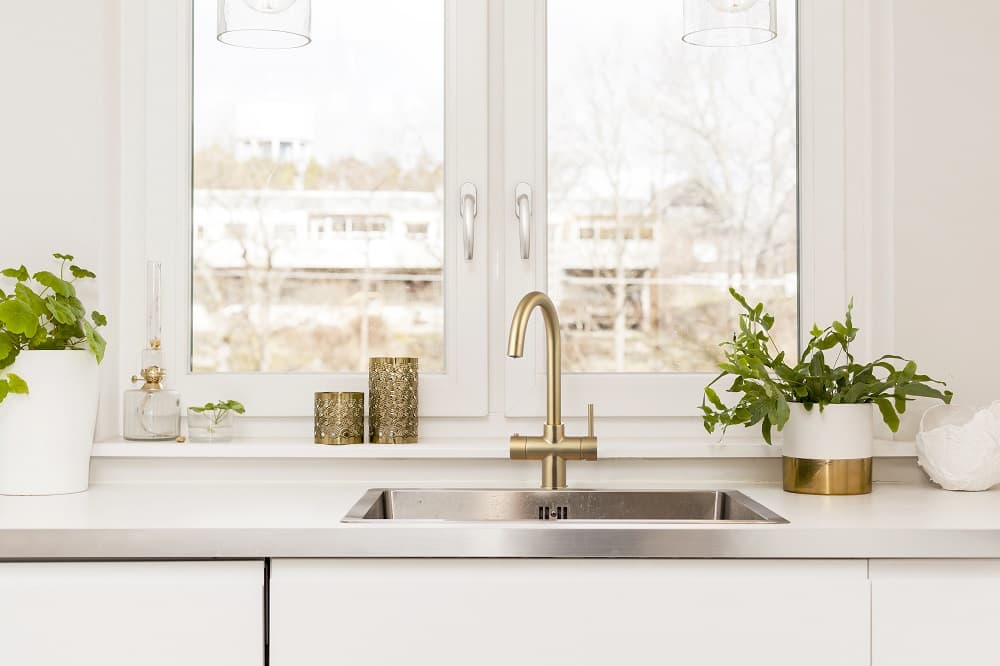
Und dieser Wasserhähne, Die Lebensdauer und Leistung sowie der Sicherheitsindex zusammen, Dann ist die beste Wahl der All-Copper-Wasserhahn, das hat eine gute Korrosionsbeständigkeit, Anti-Abrasion, Einfache Verarbeitung, antibakteriell, Langes Lebensdauer, und andere Eigenschaften.
Antibakterielle Leistung: Kupfer kann schnell Super Bakterien wie MRSA in töten 30 Protokoll, und machen Bakterien, die keine Antikörper produzieren können (Kupferwasserhahnwand züchtet keine Bakterien), Welches sind andere Materialien (wie Edelstahl, Plastik) das hat nicht den Vorteil.
Schwermetallelemente enthalten.
Das Hauptmaterial des derzeit verwendeten Küchenhahns ist Brass HPB59, die Spurenmengen an Blei enthält. Die derzeitige Blei -Waschmethode der großen Marken kann den Niederschlag der meisten Schwermetalle hemmen. Für die Vereinigten Staaten’ Lead-freie Kupferanforderungen, Kupferarmaturen, die in die USA exportiert werden.
2. StaichNless Stahlhahn
SS -Wasserhähne enthalten keine Blei und sind saure- und alkali-resistent, Leiden Sie nicht unter Korrosion, Freisetz keine schädlichen Substanzen frei, und verschmutzen Sie die Leitungswasserquelle nicht. Zweifellos hat sich der Schwerpunkt vieler Wasserhahnhersteller geworden. Es versteht sich, dass mehr als 304 Edelstahl -Wasserhahnoberfläche benötigt keine Elektroplatte, Seine Oberfläche muss nur Polieren polieren müssen, und kann weiterhin den silberweißen Glanz beibehalten, Niemals rosten, Edelstahlhärte, Die Zähigkeit ist höher als Kupferprodukte mehr als 2 mal. Edelstahlhärte, Zähigkeit, Lösliches Gießen und Schnittverarbeitung sind viel schwieriger als Kupfer, hohe Kosten.

3. Zinkarmaturen
Zu den günstigsten Armaturen gehören solche aus Zink und Zinklegierungen. Dies sind auch die am wenigsten haltbaren Metallhähne.
Günstigere Wasserhähne können mit Zinklegierungsmaterialien hergestellt werden. Je bekannter ist die ZMAC-Legierung, die in erstellt wurde 1929 von den New Jersey Zink Companies, um seine Metalle zur Verfügung zu stellen. Es wurde zum ersten Mal zur Refinanzierung und Überarbeitung von Messing in Anwendungen zur Verfügung gestellt, bei denen keine Messingkorrosionsbeständigkeit erforderlich war. Im Allgemeinen für die Herstellung von Diecast -Produkten wie Kinderspielzeug und Miniaturzügen verwendet. Für Wasserhähne, Die Zinklegierung wird hauptsächlich für den Griff verwendet, der nicht direkt mit Wasser in Verbindung steht.
Zink gehört zu Heavy Metal, durch das Wasser korrodiert wird ins Wasser gemischt, Der menschliche Körper hat einen gewissen Schaden. Zinklegungsarmaturen und -anschläge sind sehr einfach zu oxidieren, Unter Wasser wird für eine lange Zeit unter dem Eintauchen von Zink freigelassen, führen, und andere Schwermetalle, die Menschen schädigen, Und die Legierung wird auch spröde, wenn der Druck des Wassers zu groß ist, Sehr leicht zu platzen. Direkter Kontakt mit Trinkwasserkomponenten, Nach den Vorschriften erlaubt nicht die Verwendung von Zinklegierungsmaterialien.
Mehrere Berichte sagen, dass Leads schädlicher sind als Arsen. Bleigehalte im Trinkwasser sind 5 PPB oder eine Milliarde pro Jahr in den USA oder Kanada, wenn die EPA keine Vorschriften enthält. Sicherlich, Dies könnte einige Führung übernommen haben. Nach Angaben der Internationalen Gesundheitsorganisation, Die Verordnung würde begünstigen “No-Lead” Standards.

4. Kunststoff
zuletzt, ein Plastik Küchenarmatur wird am günstigsten sein, und auch am wenigsten haltbar. Ein positiver Aspekt von Kunststoffarmaturen, aber, ist, dass sie die einzigen Modelle sind, die kein Blei enthalten.
Warum ist Plastikarmatur ein Problem??
Plastikarmatur ist im Allgemeinen PPR oder PVC, Diese beiden Wasserhähne, wenn die Sonne für weniger als ein Jahr verfallen wird, und Plastikarmaturen existieren dummes Phenol übersteigt den Standard, langfristige Verwendung von Auswirkungen der menschlichen Gesundheit, Kopfschmerzen, Durchfall und andere unangenehme Reaktionen.
- Nach der obigen Analyse, Ich empfehle, nur Kupferarmaturen oder Edelstahlarmaturen auszuwählen, Im Folgenden haben wir eine detaillierte Analyse von Kupfer- und Edelstahlmaterialien.
Gewöhnliche Messingstange

Mit hervorragender Bearbeitbarkeit, kalte Plastizität, heiße Plastizität, freies Schneiden, und Korrosionsbeständigkeit, es ist leicht zu verbinden und zu löten.
BLEIFREIER UMWELTSCHUTZ KUPFERSTAB
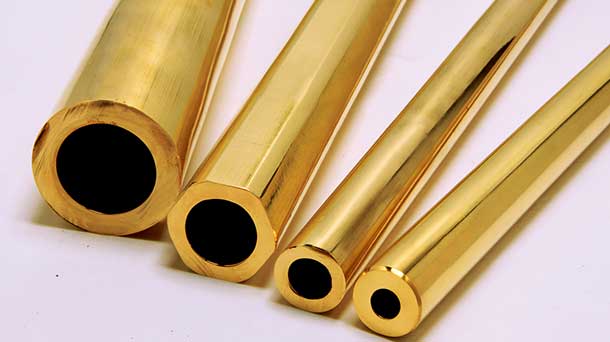
Bleifreier Umweltschutz (Pb ≤ 0,25 %), Hervorragende mechanische Eigenschaften, Hervorragende thermische Verarbeitungsleistung, Gute Bearbeitungsleistung, Hervorragende Beständigkeit gegen Spannungskorrosion
BLEIFREIER UMWELTFREUNDLICHER KUPFERSTAB

- Polierte Kupferbarren der Güteklasse A: Die Anzahl der Oberflächen ist Verunreinigungen(Die einzelne Fläche ist geringer als oder gleich 0.08 quadrat mm)≤3
- DZR-Kupferbarren: Anforderungen an die Entzinkungsbeständigkeitstiefe < 100 Mikron
ANTI-ENTZINKUNGS-KUPFERSTABE

Hervorragende Beständigkeit gegen Entzinkung, Hervorragende mechanische Eigenschaften, Hervorragende thermische Verarbeitungsleistung, Gute Bearbeitungsleistung, und ausgezeichnete Widerstand gegen Stresskorrosion.
CHEMIE-KOMPONENTENSTANDARD

CHEMIE-KOMPONENTENSTANDARD

PRODUKTANWENDUNGEN

HIGH-END BADEZIMMER
ZUBEHÖR

UMWELTKÜCHE& BAD
AUSRÜSTUNG

VENTIL
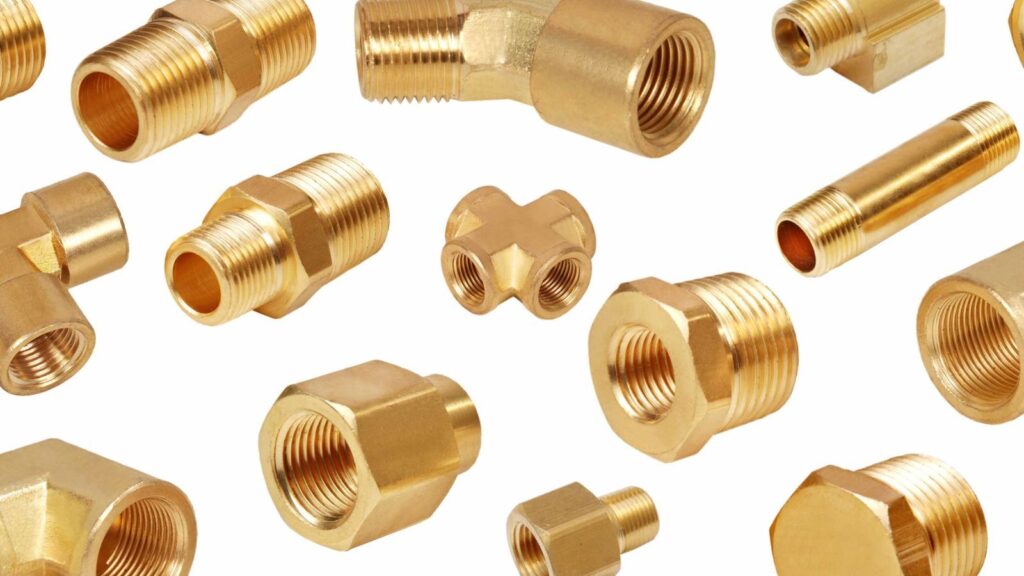
BESCHLÄGE
PRÜFGERÄTE
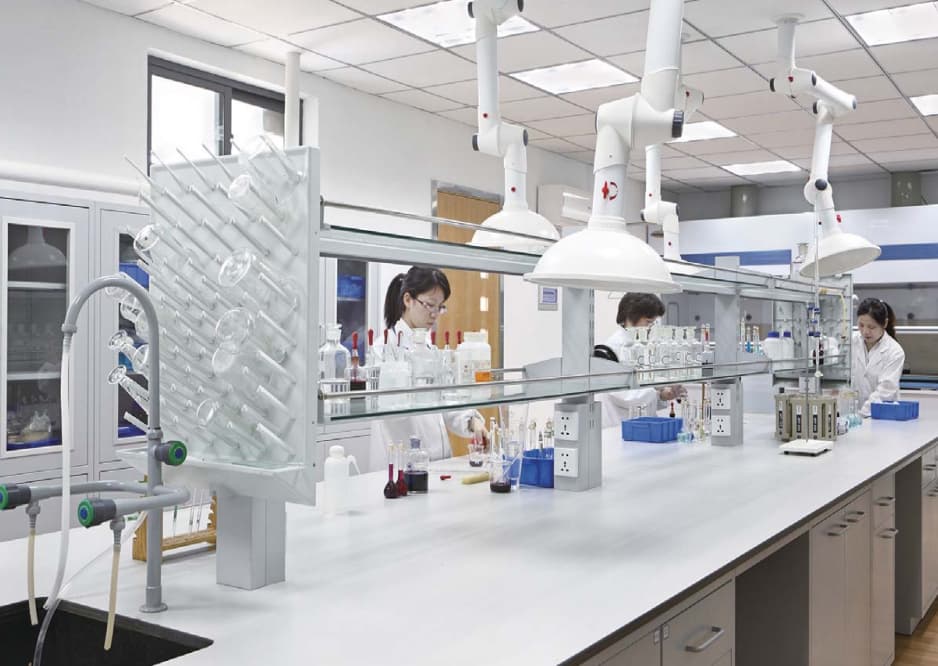
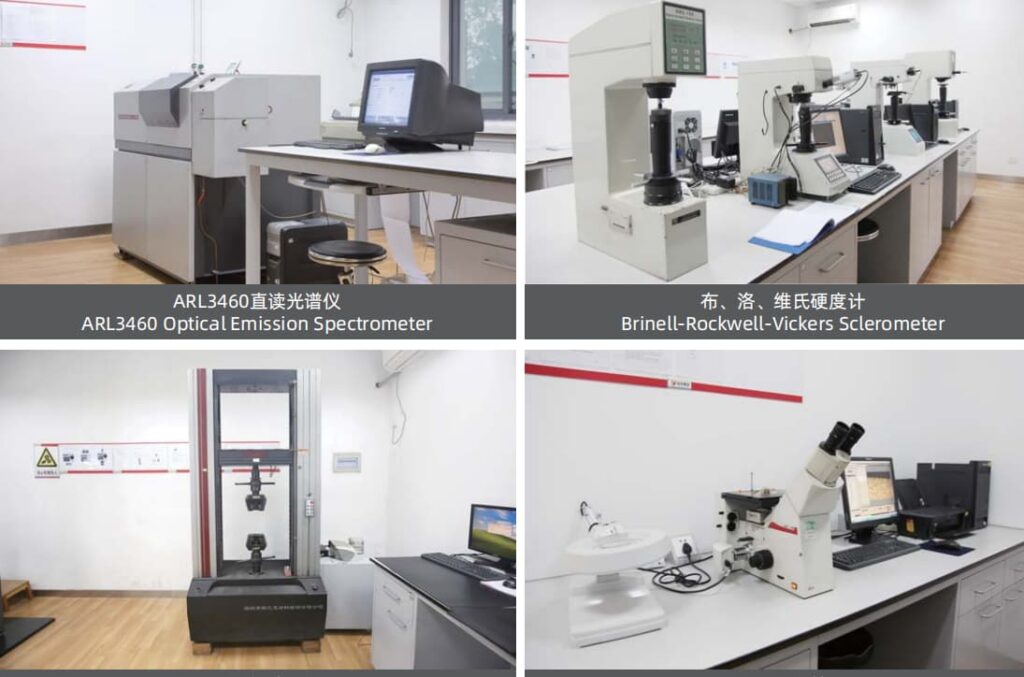
Messing gegen Edelstahl

Was ist der Unterschied??
Es kann eine überwältigende Entscheidung sein, wenn es darum geht, den perfekten Wasserhahn für Ihr Zuhause auszuwählen. Material, Style-Funktion, und Preis zusammen, um Ihre Wahl besonders schwierig zu machen! Abgesehen von dem Wunsch, ästhetisch ansprechend zu sein, Das Wichtigste ist die Qualität und Langlebigkeit Ihres Wasserhahns. Messing und Edelstahl sind die beiden Hauptmaterialien für Armaturen auf dem Markt. Beide Optionen sind äußerst vorteilhaft und gewährleisten lebenslange Funktion und Zufriedenheit, aber was ist der Hauptunterschied zwischen ihnen?
Material Zusammensetzung (Das Technische Zeug)
Messing ist ein Legierungsmetall, das hauptsächlich aus Kupfer und Zink besteht. Die Zusammensetzung kann irgendwo dazwischen liegen 50-63% Kupfer u 50-37% Zink, mit anderen Additiven, die für die Materialverformbarkeit verwendet werden. Es gibt viele Herstellung Methoden zum Erstellen von Messinghardware, darunter geschmiedet, geschmiedet, Gießen, und Stanzverfahren. Da es einen relativ niedrigen Schmelzpunkt hat, Es ist einfacher zu gießen und ist weich genug, um mit wenig Anstrengung und dennoch winterhart genug zu maschinen, um die Strapazen des Lebens als Wasserhahn zu ertragen. Einer der wichtigsten (und nur) Probleme mit Messingarmaturen sind, dass sie es nicht tun 100% Bleifrei. Früher war es üblich, Messing aus Gründen der Formbarkeit Blei hinzuzufügen, aber jetzt ist es für die Verwendung in Wasserhähnen und den meisten anderen Sanitärarmaturen praktisch verboten. Vor 2014, ein Wasserhahn könnte so viel enthalten wie 8% blei und nennt sich trotzdem bleifrei. Jetzt ist der maximale Bleigehalt in einem Wasserhahn 0.25% (1/4 von 1%). Zur Einhaltung der Bleibeschränkungen, Der heutige Wasserhahn ist Messing “Bleifrei” Messing, das andere Zusätze für die Formbarkeit verwendet.
304 und 316 Edelstahl ist eine weitere Materialoption, die für Wasserhähne verwendet wird. Diese Edelstahloptionen enthalten 18% Chrom u 8-10% Nickel, Das Nickel verleiht dem Stahl eine besondere kristalline Struktur, um die Festigkeit und Formbarkeit des Materials zu erhöhen, während das Chrom dem Stahl hilft, Korrosion zu widerstehen. Eine kleine Menge Molybdän (2-3%) hinzugefügt wird 316 Stahl, um Säuren besser zu widerstehen. Beide Werkstoffe sind austenitische Stähle, was bedeutet, dass sie niedrig sind- oder nicht magnetisch. Rostfrei 304 ist bei weitem die am häufigsten verwendete Legierung für die Herstellung von Wasserhähnen, woraus unsere Lulani-Edelstahlarmaturen bestehen. Rostfrei 316, bekannt als Edelstahl in Marinequalität, hat eine überlegene Beständigkeit gegen Lochfraß, Korrosion, und Färbung, insbesondere in sauren oder salzhaltigen Umgebungen, kommt aber hinter Stainless auf den zweiten Platz 304 wegen seiner Härte und Herstellung Schwierigkeitsgrad. Rostfrei 316 ist in der Regel etwas teurer als Edelstahl 304 aus diesem Grund, aber ansonsten sind sie praktisch identisch. Im Allgemeinen, Edelstahl ist härter als Messing und hat einen höheren Schmelzpunkt, Dadurch ist es schwieriger zu gießen und zu bearbeiten als Messing.
Leistungen
Messing ist eines der ältesten Materialien für Wasserhähne überhaupt und bekannt für seine Langlebigkeit, da es viel Verschleiß standhält. Messinghähne brechen oder zerfallen nicht so leicht. Es ist eines der korrosionsresistenten Materialien da draußen. Dies ist besonders wichtig, wenn Sie hartes Wasser haben, das einen Wasserhahn noch schneller korrodiert als andere Materialien. Heißwasserschäden und anderen korrosiven Umwelteinflüssen hält es fast immer besser stand als jedes andere Material. Messing ist auch feuerbeständig und oft eines der wenigen Gegenstände, die geborgen werden, wenn ein Haus durch Feuer zerstört wird.
Da wird es so häufig verwendet, Es ist leicht, fast jedes Sanitärteil oder die Fülle aus demselben Material zu finden, was den Austausch von Badezimmerteilen sehr einfach macht. Dies kann auch Ihre Installations- und Wartungskosten etwas kostengünstiger machen, da das Material so einfach zu verarbeiten ist. Abgesehen davon, dass es leichter zu finden ist, Messingbefestigungen sind formbarer als Stahl oder Eisen. Dies bedeutet, dass es einfacher ist, sich zu biegen, Form- oder Formbeschläge nach Ihren Bedürfnissen als die meisten anderen Metalle.
Rostfreier Stahl, andererseits, gilt als eine Stufe über Messing. Seine physikalische Haltbarkeit weist eine Langlebigkeit auf, die andere Materialien nicht aufbringen können. Es hat natürliche hitzebeständige Eigenschaften, die als korrosionsbeständig gelten, anlaufbeständig, und wird nicht rosten. Dies bedeutet, dass es weniger Wartung erfordert, da es kratzfest ist und Flecken und Flecken verschleiert.
Edelstahl ist äußerst hygienisch. Es ist ein übliches Material, das in der Lebensmittelverarbeitung verwendet wird, Krankenhaus, und Pharmaindustrie aufgrund seiner korrosions- und rostbeständigen Eigenschaften. Das in Wasserhähnen verwendete Edelstahlmaterial sorgt für eine glatte, leicht zu regene Oberfläche, die nicht produzieren Kleine Poren oder Spalten, bei denen Bakterien sonst aufweisen können. Seine natürlich vorkommenden Eigenschaften können für eine Vielzahl von Branchen sehr attraktiv sein.
Einer der Hauptunterschiede zwischen Messing und Edelstahl besteht darin, dass es sich um Edelstahl handelt 100% Bleifrei. Alle Sanitärarmaturen in den USA sollten sicher sein, aber wie schon erwähnt, Einige Materialien enthalten eine winzige Menge Blei. Edelstahl nicht, Sie können also sicher sein, dass es keine Führung in das Wasser, das aus dem Wasserhahn kommt.
Wie Sie sagen, was Sie bekommen
Sie können die meisten Wasserhähne und Armaturen aus Metall und Kunststoff mit fast jedem Finish beschichten, also beim Kauf einer neuen Armatur, Fragen Sie sicher, welches Material im Körper des Wasserhahns liegt. Ein weiterer Trick besteht darin, zu fühlen, wie schwer der Wasserhahn ist. Da ein Wasserhahn von guter Qualität ein gewisses Gewicht haben wird, Sie möchten spüren, wie stark verschiedene Wasserhähne sind.
Massive Messingkonstruktionen sind viel hochwertiger als Wasserhähne mit Messingbeschichtung oder einer messingähnlichen Oberfläche. Sie können normalerweise zwischen den beiden unterscheiden, da massives Messing viel schwerer ist. Gleiches gilt für Edelstahlarmaturen. Es gibt viele billigere Stahloptionen auf dem Markt, aber ihr niedrigerer Preis korreliert oft mit ihrer geringeren Qualität. Echte Edelstahlhähne bestehen aus beidem 304 oder 316 rostfrei, Seien Sie also vorsichtig bei allem, was anders aufgeführt ist.
